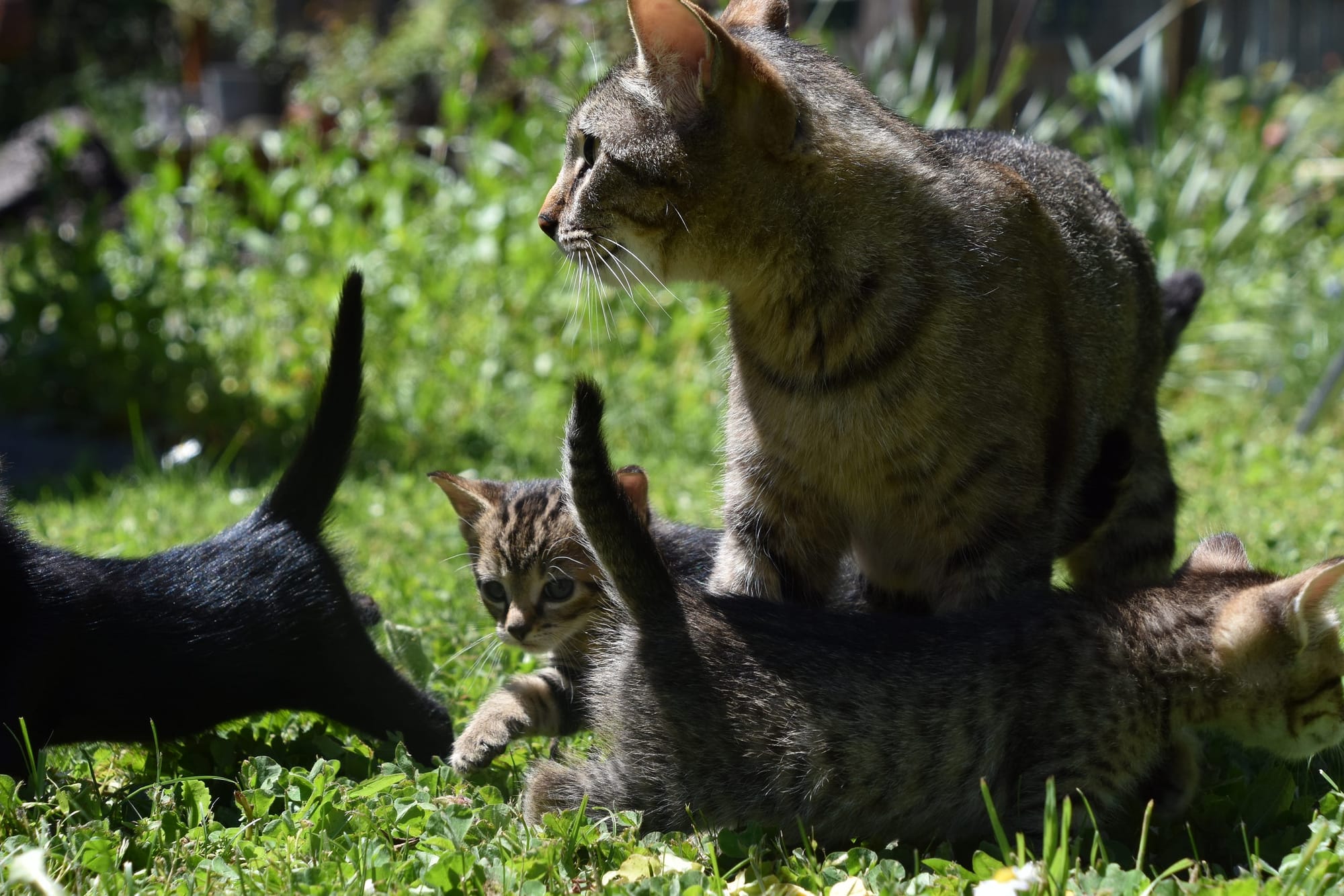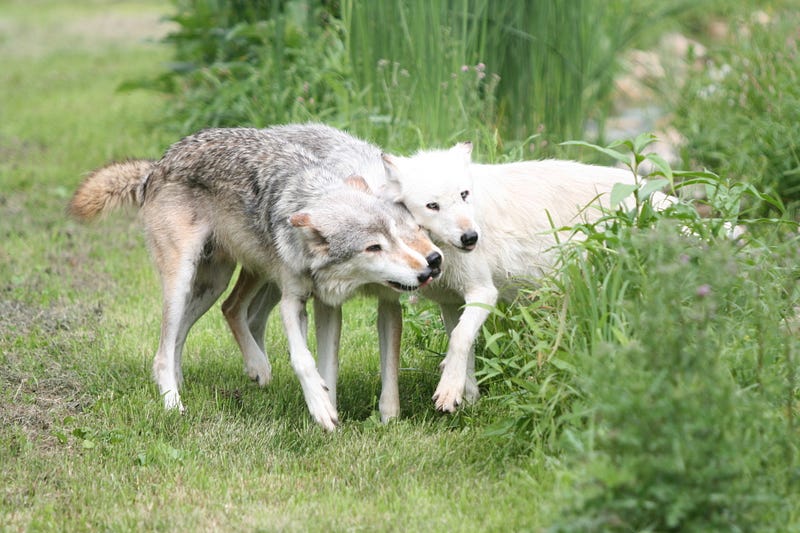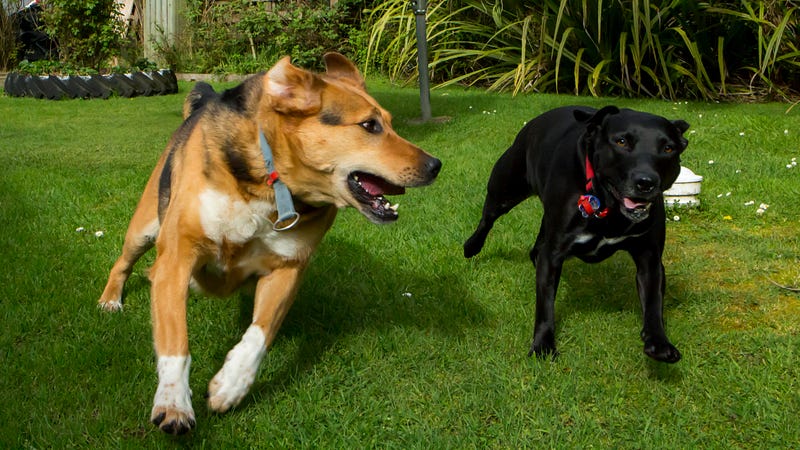
So far this season, we’ve mostly discussed play in wild animals. This week, we’re going to be looking at two of the most popular domestic pets and their use of play. How much of it comes from their wild ancestors? How much can be attributed to artificial selection by humans? While exact answers are difficult to come by, we can use behavioral observations as well as more recent genetic analyses to at least get a good idea of the source of play behavior in both.
Domestic dogs descend from the gray wolf, Canis lupus, and are the first species to have been domesticated by humans in approximately 13000 BCE somewhere near Eurasia. Each dog breed contains signature traits that were chosen for the performance of a variety of tasks. Domestic cats, on the other hand, come from the Near Eastern wildcat, Felis lybica, with domestication occurring sometime between 8000 and 7500 BCE in the Middle East.
We are all familiar with the playful nature of these two animals, which is why they are among the most popular pets (in the United States they are 2nd and 3rd in terms of total numbers, behind only freshwater fish, but are the top two in terms of number of households that own such a pet). But, how different is their play behavior compared to their wild progenitors? And what accounts for those differences? A good way to start is looking at what play accomplishes. Both cats and dogs are carnivores (not just in the colloquial sense that they eat meat, but also that they belong to the taxonomic Order Carnivora). Thus, a large portion of play behavior takes the form of predation practice. Cats will stalk and pounce on objects and dogs will chase each other. They both will also partake in forms of play aggression. These allow younger individuals to develop motor skills as well as social experience.

The forms of these play behaviors are still quite similar to their wild counterparts and the differences between the two species’ behavior can also trace back to their own ancestral lineages. Dogs are, generally considered more social while cats are often portrayed as aloof or distant. Gray wolves live in family packs averaging in size from 5 to 11 individuals. Wildcat species are more spread out. A male will have a region of reproductive territory that encompasses up to three female territories. Socialization most frequently occurs between kittens of the same mother before they reach maturity, at which point they must find territory on their own.
Recent genetic research has shed some light on the actual genetic differences between dogs and wolves and show that they are not a product of natural selection, but instead indicate artificial selection of traits during domestication. The significance of this is particularly telling when you examine the four species domesticated by humans between dogs and cats: goats (10000 BCE in Iran), pigs (9000 BCE in China and western Asia), sheep (9000 to 8500 BCE in Turkey), and cattle (8000 BCE in Eurasia). Recognize what they all have in common? They are all animals bred for producing meat, milk, pelts, and hides. Thus, much of the domestication effort was in maximizing the production of those goods. For dogs, no such goods existed, so the domestication selection pressures were mainly behavioral. The 11 variant genes between dogs and wolves all affect the fight-or-flight response or emotional processing. These changes had the effect of decreasing fear and aggression in the animals.
As for cats, the behavioral differences between them and their progenitors are even less pronounced than in dogs, to the point where both their physical form and overall behavior are practically identical and hybridization with various wildcat species is possible, and even common in some locations. The wild species of the genus Felis are considerably less aggressive than their counterparts in the genus Canis. This means that many of the desirable traits for domestication were already present in the ancestral cats and much less artificial selection was required in order to produce the desired end result.

Looking at all of this, I think that it is clear that both the form and nature of play behavior in domestic cats and dogs come in large part from their original ancestor species. Play has important selective benefits for increasing individual and group survival. The main element attributable to human domestication, especially for dogs, is in a matter of degrees. The actual behaviors are quite similar, dogs have simply been bred to be less aggressive and more playful. We did not create these behaviors, we merely accentuated them. Because our pets depend much more on us now, some of the initial usefulness of these behaviors is lost, but not all. They still have social and motor skill development functions, though they are less necessary from a preparatory standpoint in terms of future tasks and survival obstacles.
I hope you are still enjoying Season 6. I enjoyed writing this particular story even more because of the overlap of so many of my interests: animal behavior, evolution, taxonomy, genetics, and the human desire to understand and even harness these things. As always, please let me know what parts you like about my stories as well as what you think I still need to do to improve. And, if you have an idea for a topic you would like to see me cover in the future, I would love to hear that too.